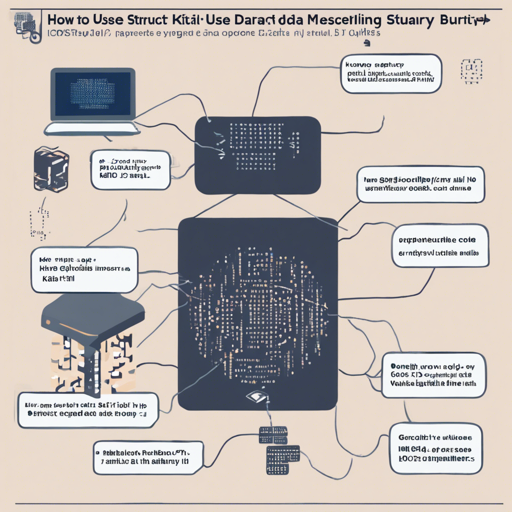Kaitai Struct is an innovative tool designed for anyone dealing with complex binary data structures. It simplifies the process of describing and parsing various binary formats, making that often tedious task much easier and more efficient. In this guide, we’ll delve into the workings of Kaitai Struct and provide a step-by-step approach to its usage.
What is Kaitai Struct?
Kaitai Struct is a declarative language that allows users to describe binary data structures found in files or memory. This includes formats like binary file types or network packet structures. Once you describe a particular format in Kaitai Struct, you can compile it into source files in multiple supported programming languages. The generated code provides an API for accessing the described data structures easily.
Why Use Kaitai Struct?
- Reduces repetitive coding for binary data parsing.
- Cross-language and cross-platform compatibility.
- Active community and growing collection of format descriptions.
How to Get Started?
Step 1: Set Up Your Environment
The easiest way to check out the entire Kaitai Struct project is by cloning the main repository:
git clone --recursive https://github.com/kaitai-io/kaitai_struct.gitStep 2: Create Your .ksy Format Description
Let’s consider an example—describing a GIF file header using a simple `.ksy` format description.
yaml
meta:
id: gif
file-extension: gif
endian: le
seq:
- id: header
type: header
- id: logical_screen
type: logical_screen
types:
header:
seq:
- id: magic
contents: GIF
- id: version
size: 3
logical_screen:
seq:
- id: image_width
type: u2
- id: image_height
type: u2
- id: flags
type: u1
- id: bg_color_index
type: u1
- id: pixel_aspect_ratio
type: u1
Step 3: Compile Your .ksy File
Once you have your `.ksy` file ready, use the Kaitai Struct compiler to generate source files for your desired programming language.
Step 4: Using the Generated Code
Here is how you can use the generated code in popular programming languages:
In C#
cs
Gif g = Gif.FromFile("pathtosome.gif");
Console.WriteLine("width = " + g.LogicalScreen.ImageWidth);
Console.WriteLine("height = " + g.LogicalScreen.ImageHeight);
In Java
java
Gif g = Gif.fromFile("pathtosome.gif");
System.out.println("width = " + g.logicalScreen().imageWidth());
System.out.println("height = " + g.logicalScreen().imageHeight());
Troubleshooting Common Issues
If you encounter issues while implementing Kaitai Struct, consider the following troubleshooting tips:
- Ensure that the format description in your `.ksy` file is correctly outlined without syntax errors.
- Check for compatibility issues between the specific version of the Kaitai compiler and the programming language you’re using.
- If you have trouble generating files, revisit the setup instructions to check if all dependencies are installed.
- For more insights, updates, or to collaborate on AI development projects, stay connected with fxis.ai.
Conclusion
By following these steps, you can harness the power of Kaitai Struct to make the task of dealing with binary data structures simpler and more manageable. The ability to generate code across multiple programming languages enhances adaptability in your projects, whether you’re developing applications, analyzing network packets, or working with complex file formats. At fxis.ai, we believe that such advancements are crucial for the future of AI, as they enable more comprehensive and effective solutions. Our team is continually exploring new methodologies to push the envelope in artificial intelligence, ensuring that our clients benefit from the latest technological innovations.

